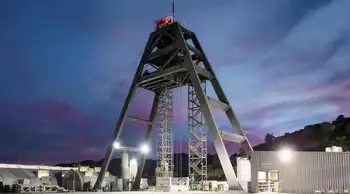Many challenges ahead for Toronto Hydro CEO
By Toronto Star
NFPA 70e Training - Arc Flash
Our customized live online or in‑person group training can be delivered to your staff at your location.

- Live Online
- 6 hours Instructor-led
- Group Training Available
About a third of its electricity infrastructure is operating well beyond its life expectancy and $1.3 billion needs to be spent over the next 10 years just to maintain the system.
The city also needs new local power supply to accommodate its growth, or more aggressive approaches to energy conservation – likely both. Tough talk about tackling climate change, meanwhile, has created a public expectation for more renewable power and focus on energy efficiency.
Adding complexity to these issues is a human-resources crisis affecting the entire electricity sector. About a third of Toronto Hydro's workforce is expected to retire over the next 10 years, creating a huge skills gap that will require unprecedented attention to training and recruitment.
"These have snuck up on us because historically utilities over the past 30 years haven't paid much attention," says David O'Brien, Toronto Hydro Corp.'s president and chief executive officer. "Suddenly, it's here, and we have to fix it."
The best way to fix it, argues O'Brien, is to empower local utilities by giving them more control over community-based power generation, electricity distribution and energy conservation – that is, a utility structured like the old Ontario Hydro but with a focus on the needs of their own municipalities. Only then can a utility act on the wants and concerns of the homeowners and businesses they directly serve, he says.
"Our customers are telling us they want choice, and they're very clear about choice," says O'Brien. "In some cases certain programs work with them and in others they don't. They want to engage with us about solutions just for Toronto, but you can't do that if you have four or five agencies trying to stick their fingers in the pot."
Those agencies include the Ontario Power Authority, the Ontario Energy Board and the Independent Electricity System Operator. The current regulatory regime they operate in, as dictated by the Electricity Act, is only slowing down progress, contends O'Brien. He wants changes in the law that would let utilities like Toronto Hydro cut through unnecessary layers of red tape. "I think strategically it's the way to go," he says.
Stephen Motluk, an energy consultant with Elenchus Research Group in Toronto and past analyst with the Ontario Energy Board, is sympathetic to O'Brien's mission. Still, he's wary of the idea of creating a provincial stable of baby Ontario Hydros, even if they are focused on their own communities.
"When you say a bunch of mini-Ontario Hydros that's a scary moniker," says Motluk, referring to the reputation of Ontario Hydro as a wasteful, highly political and overly bureaucratic fiefdom.
But Motluk agrees that local utilities are suffering from overregulation and that the situation has led to the deterioration of distribution networks that were once the crown jewel of Ontario's electricity sector, as well as a gradual decline in system reliability.
"They've been distracted from their core function over the last 10 years," explains Motluk.
The result is that smaller utilities, because of the heavy regulatory burden, are forced into mergers with neighbouring utilities. Those able to stand on their own, meanwhile, must redirect more of their budget to regulatory compliance.
"We're beginning to see the implications of this right now on reliability," says Frank Cronin, an economic consultant in the energy sector, who adds that the situation is not sustainable.
Both Cronin and Motluk continue to see a role for high-level provincial planning of the electricity sector, and don't support the notion that a Toronto Hydro should be able to just go ahead and build a gas-fired power plant when needed. On the other hand, they question the need for so much central oversight for small generation and conservation projects.
Over at Veridian Corp., created initially through the merger of utilities in Ajax, Clarington and Pickering, there's a sense of frustration that local utilities are being left out of the loop on key decisions and programs that directly impact their service areas.
Communications between local utilities and the province's central planning authority have been poor on some issues, says Michael Angemeer, president and CEO of Veridian. "What we've seen so far, though a lot of it has worked, has been programs that have largely ignored the benefits local distribution companies can bring to the discussions."
But communities – and within them particular neighbourhoods or subdivisions – may have good reason to reject such programs, or be against the construction of a power-generation facility in their backyard. Local utilities, argues Angemeer, are best positioned to work with developers, municipal government and other local stakeholders to come up with an approach that a community can get behind.
"You have to take this holistic approach," he says. "This isn't just about making sure the lights stay on, it's also about planning and building better communities that are sustainable."
Just recently the head of the independent system operator, Paul Murphy, unveiled plans to create a working group of utilities charged with outlining a vision of a modern "smart grid" for Ontario – an efficient electricity system that can fully accommodate renewable energy, smart appliances, electric cars, and conservation.
Toronto Hydro, Hydro Ottawa, Hydro One and Burlington Hydro are the initial members of the group, but already other utilities are asking to join.
O'Brien says he plans to use the work group to move his idea forward, and ultimately get the legislative changes he's seeking.
"My philosophy is that the system of approval and oversight for all these innovative ideas, such as the smart grid, is part of the reason these ideas are not moving forward," he says. "It's not a criticism, it's a fact of life."
But would Toronto Hydro, if given more control, transform into a bloated, bureaucratic beast, similar to what Ontario Hydro became?
O'Brien downplays the risk.
"Honestly, I believe the ratepayers of Toronto are ready for something like this," he says.











